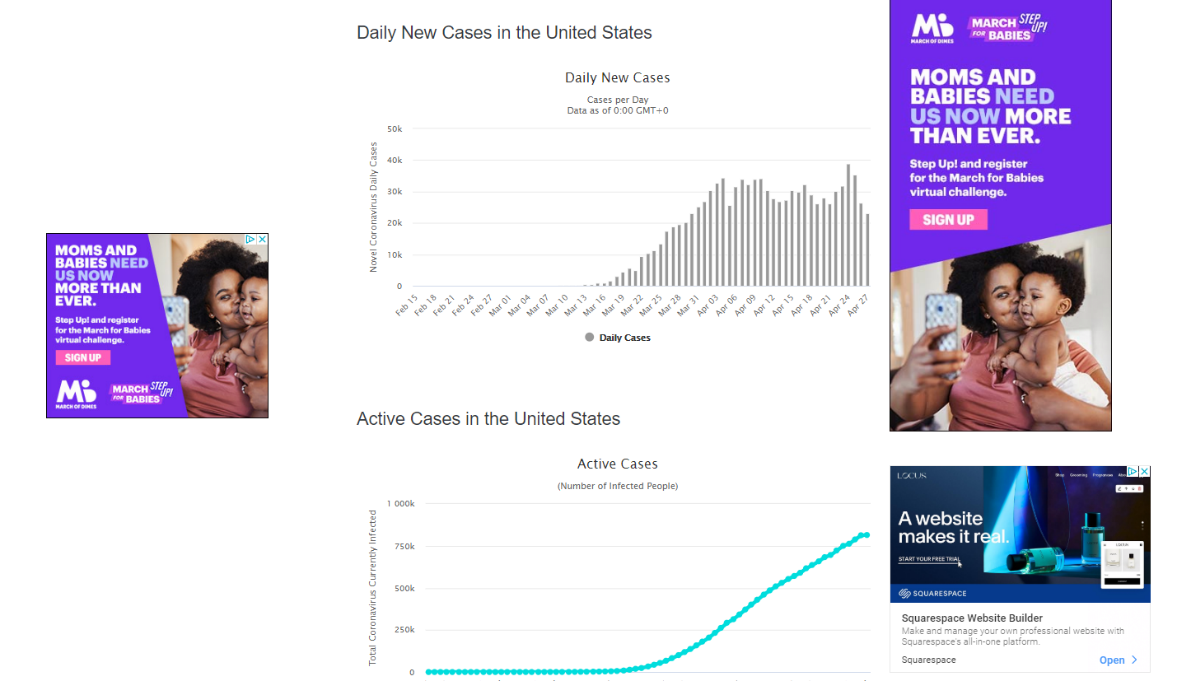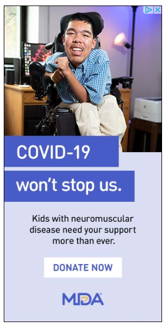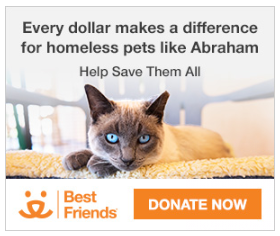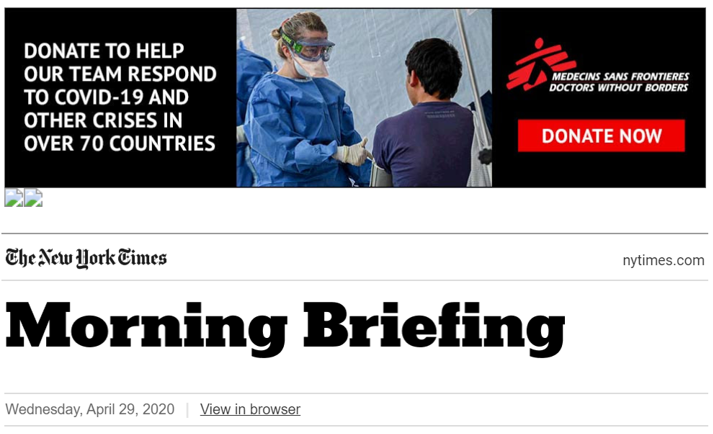So, we get lots of questions from people wondering how they can navigate our COVID-19 fundraising world. I’ve even got questions! I’m hoping that together, we can answer a few. Like this one, for instance:
“I’m not a food bank or a hospital. Should I be stopping my digital ads during the pandemic?”
I took a little spin around the interwebz to see what other companies and organizations are doing and if that could provide some hints for what we should be thinking about.
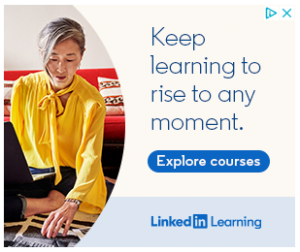 Back in October, digital ad spend was projected to grow 11.5% in 2020 to $341 billion (with a B) to become more than 47% of all media spend. It’s very possible that projection might be low, considering all of us now at home staring at our screens. My tour of a few sites didn’t impress me too much when it came to commercial ads. Most were ads pitching tech tools designed to make my small business more effective online (I don’t run a small business) or online “universities” where I can spend all my newfound free time to help my career (what free time???). Now I’m sure these ads appealed to someone, but these efforts missed the mark with this consumer. Yes, I use LinkedIn and the age of the woman in the ad above is about right (and I even think I have that couch she’s sitting in front of, how weird is that?), but I’m one of the lucky folks still employed in this economy, so no time for classes right now.
Back in October, digital ad spend was projected to grow 11.5% in 2020 to $341 billion (with a B) to become more than 47% of all media spend. It’s very possible that projection might be low, considering all of us now at home staring at our screens. My tour of a few sites didn’t impress me too much when it came to commercial ads. Most were ads pitching tech tools designed to make my small business more effective online (I don’t run a small business) or online “universities” where I can spend all my newfound free time to help my career (what free time???). Now I’m sure these ads appealed to someone, but these efforts missed the mark with this consumer. Yes, I use LinkedIn and the age of the woman in the ad above is about right (and I even think I have that couch she’s sitting in front of, how weird is that?), but I’m one of the lucky folks still employed in this economy, so no time for classes right now.
What did catch my eye were the nonprofits I saw asking me to support their efforts.
In addition, I’ve seen plenty of ads reminding me that the other problems we’re working to stop don’t go away during a pandemic:
Muscular Dystrophy Association’s “COVID-19 won’t stop us” campaign.
“Cancer hasn’t stopped.” Some of these ads had a great call to action: “Help from home.”
American Red Cross’ “Emergencies don’t take a break” campaign.
To close, here are a couple of ads from a recent visit to the New York Times website:
The header of my NYT daily email features a Doctors Without Borders ad. I’m a monthly donor; I signed up during some internal disaster a few years ago, not just because they’re a great group, but because I didn’t want to feel guilty every time there was a natural disaster. Because of my monthly gifts, I don’t have to feel like I have to give but can take my time and decide if I have the capacity to make a disaster-specific one-time gift. I like that this ad positions both their COVID-19 response and their ongoing work.
A recent study showed that donor-advised funds were the only individual giving vehicles that did not decline in the 2008–2009 recession. I also was reminded about DAFs by St. Labre Indian School, which has invested mightily in the past few years in growing its DAF donor base.
In closing, it appears that many nonprofits can resist the temptation to pull back. Unless you’re retiring soon, you really don’t want to deal with big problems next year and the year after that because you stopped looking for new donors. Continue testing your message using digital ads, keeping these thoughts in mind:
1. Retarget.
Most people looking at your site are not fundraising consultants like yours truly, so make your case to your best target audience.
2. Don’t be timid in your message.
Your cause does matter more than ever, whether you’re an animal rights group, a civil liberties organization or an arts group. Even if you can’t make a connection to COVID-19, but you’re talking to the right audience, some of them will be moved to invest in your future now.
3. Pay even more attention to your results right now.
What’s working? What isn’t? Know your ROI on a new (or recaptured) donor. Can you make the case to stretch your cost-to-acquire figure just a little bit more knowing how that will help your organization recover a little faster?
Want to connect and discuss how your organization can fundraise during these crazy times?



